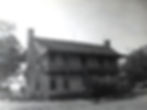The Ghost of Burneyville's Hotel
- Robin Cole-Jett
- Sep 5, 2024
- 3 min read

Burneyville sits less than three miles from the Red River in Love County, Oklahoma. Although now it's just a quiet little hamlet of homes, horses, cows, and a small post office, it was once a much livelier place.
Burneyville was named after Wesley Burney, a Chickasaw citizen (and relative of the Chickasaw chief David Burney) who came to Indian Territory in the 1850s and raised cattle. He leased access to the land to white men, mainly from Gainesville (Cooke County, Texas), through the permit system.
What was the permit system? While the Chickasaw Nation had plenty of land, money, and slaves in the 1850s, it did not have a large population, which made it ripe for exploitation by Anglo (white) men from Texas who ran their cattle into the nation and squatted on the land like their ancestors had done in the east. The Chickasaw government thus created a permit system, which legitimized the white presence in the territory. A Chickasaw citizen could sponsor non-citizens for permit fees that they paid to the nation. This is how Burneyville developed: the Texas men came onto Wesley Burney's land as as carpenters, blacksmiths, store keepers, and hotel managers. It's Burneyville's hotel that I really want to focus on, because it was once a real beauty.

Near Burneyville was one of Abel Warren's trading post, with a ferry that shuttled traders and bison hides back and forth across the Red River. This became the Burneyville Crossing Ferry. The trading post closed and settlements were a bit further north, east, and west, so when travelers, drummers (sales agents) and permit-seekers entered Burneyville and needed a place to crash, the Burneys sought to build a boarding house. They provided a permit to James Watson from Gainesville, who built the hotel around 1876. He later sold the improvement back to the Burneys in order to establish his own hotel in Purcell in preparation for the land runs.
The hotel was a typical two-story boarding house of the era: two stone chimneys flanked each side, two balconies balcony stretched along the long sides and provided verandas for the front and back porches, large windows and doors provided cross breezes, and the back portion, where the kitchen stood, gave the house an L shape and provided an intimate space for a garden. The building changed hands a few more times before it became the home and business of the Fitts family, who then became the actual owners in the 1890s. The Dawes Commission gave non-Citizens in Indian Territory the right to own the land on which their improvements sat if they paid taxes to the nation, which the Fitts family did. Sarah Fitts took over operations. She planted a garden, served large breakfasts, and sold her food to workers at the gin and at construction sites. The hotel became known as "Grandma Fitts' Place." And when she retired in the 1940s, so did the hotel.

In 1970, the Daily Ardmoreite featured the history of the hotel and Burneyville, with pictures and wonderful recollections of Grandma Fitts. And then, tragedy struck. The abandoned but sturdy building, at this point almost a century old, burned (I'm not sure if it was arson or not), destroying Grandma Fitts' gardens, vines, and trees. By this time, the main road to Marietta had been redirected a bit further north out of Burneyville, and because the town had never welcomed a railroad, it withered away with the loss of this historic building.
There's truly nothing left of the hotel anymore but photos. So enjoy them here, thanks to the Daily Ardmoreite and Ardmore Public Library's collection.










